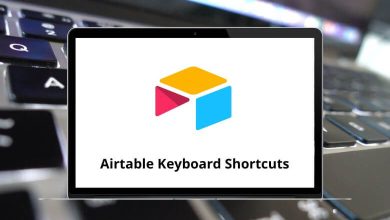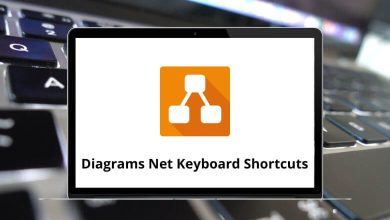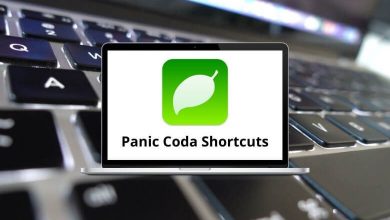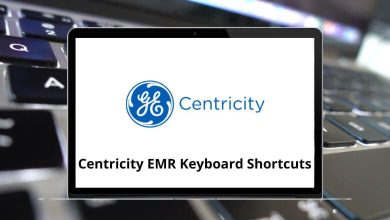10 Best Houdini Alternatives for Procedural Design
Houdini has long been the go-to tool for procedural 3D modeling, visual effects, and animation. Its node-based workflow and immense flexibility make it a favorite among studios working on blockbuster films and AAA games. However, Houdini isn’t always the right fit for everyone. It comes with a steep learning curve, a heavy price tag, and resource-intensive demands that may not suit freelancers, indie creators, or smaller studios. That’s where Houdini Alternatives come in.
Table of Contents
Whether you’re looking for more intuitive interfaces, better integration with game engines, or specialized tools for sculpting, environment design, or character animation, there are plenty of strong Houdini Competitors to explore.
Why Should You Look for Houdini Alternatives?
While Houdini is incredibly powerful, there are several reasons artists and studios seek alternatives to Houdini:
- Learning Curve: Its node-based procedural workflow is complex for beginners.
- Cost Factor: Houdini licenses can be expensive for freelancers or indie creators.
- Hardware Demands: Running large simulations requires high-end systems.
- Workflow Needs: Some artists prefer sculpting-first or animation-focused tools.
- Integration Issues: Certain pipelines may work better with Maya, Blender, or game engines like Unity.
By exploring Houdini Competitors, you can find tools that are easier to learn, more affordable, or specialized for tasks like sculpting, VFX, or environment creation.
Top 10 Alternatives to Houdini for VFX, Animation & Modeling
We’ll break down ranging from free, open-source solutions to industry-grade powerhouses so you can find the right fit for your creative workflow.
1. Blender
Blender is one of the most popular Houdini Alternatives, thanks to its open-source nature and versatility. It offers a wide range of tools for modeling, sculpting, animation, VFX, and even video editing all in one free package.
With the addition of Geometry Nodes, Blender has stepped into the procedural modeling world, making it more appealing to Houdini users looking for a less intimidating entry point. Its large community and continuous development mean you’ll always have access to tutorials, plugins, and updates.
Key Features of Blender:
- Geometry Nodes for procedural workflows
- Powerful sculpting and modeling tools
- Integrated rendering with Cycles and Eevee
- Wide plugin and add-on ecosystem
- Free and open-source with strong community support
Read More: Blender Shortcuts | Blender Alternatives
2. Autodesk Maya
Autodesk Maya is one of the most established tools in the 3D industry and a strong Houdini Competitor for animation, modeling, and VFX. While Houdini is known for procedural workflows, Maya is often preferred for character animation and rigging, making it a staple in film, gaming, and TV production.
Maya also integrates well with Arnold for rendering and offers extensive scripting with Python and MEL for customizing workflows. Studios often combine Houdini and Maya, but Maya on its own can cover most needs for animation-heavy projects.
Key Features of Autodesk Maya:
- Industry-leading character animation and rigging tools
- High-quality rendering with Arnold integration
- Advanced dynamics and effects for VFX work
- Robust Python/MEL scripting for automation
- Widely adopted in film and gaming studios
Related: Autodesk Maya Shortcuts | Maya Alternatives
3. Autodesk 3ds Max
Autodesk 3ds Max is another major alternative to Houdini, especially popular in architecture, visualization, and game development. Unlike Houdini’s node-heavy setup, 3ds Max provides a more traditional modifier stack system, which is often easier for beginners to grasp. It excels in modeling, rendering, and animation, while also offering a vast plugin library that extends its functionality.
For professionals in architectural visualization or product design, 3ds Max is often a preferred tool due to its compatibility with rendering engines like V-Ray and Corona.
Key Features of Autodesk 3ds Max:
- User-friendly modifier stack workflow
- Strong architectural and product visualization capabilities
- Extensive plugin support (e.g., V-Ray, Corona Renderer)
- Powerful modeling and texturing tools
- Widely used in game development pipelines
Learn More: 3ds Max Shortcuts | 3ds Max Alternatives
4. Cinema 4D
Cinema 4D by Maxon is a widely respected tool in the motion graphics and VFX industry. It’s considered one of the easiest Houdini Alternatives to learn, thanks to its intuitive interface and smooth workflow. While Houdini is more complex and technical, Cinema 4D is designed for quick iteration and creativity, making it a favorite among motion designers and advertising studios.
Its MoGraph toolset is unmatched for creating procedural animations, and it integrates seamlessly with After Effects, making it ideal for broadcast and design work.
Key Features of Cinema 4D:
- Intuitive and beginner-friendly interface
- MoGraph toolset for procedural motion graphics
- Seamless Adobe After Effects integration
- High-quality rendering with Redshift and Arnold support
- Strong community and tutorial ecosystem
Read More: 90 Cinema 4D Keyboard Shortcuts
5. Modo
Modo, developed by Foundry, offers a balance between procedural tools and traditional modeling workflows. It’s often chosen as a Houdini Competitor for artists who want precision in modeling but without the steep complexity of Houdini.
Modo is praised for its flexible modeling and texturing tools, along with its clean and customizable interface. It’s particularly strong in creating realistic assets and environments for games, films, and product design. While it doesn’t match Houdini in large-scale simulations, it’s faster and more user-friendly for direct modeling tasks.
Key Features of Modo:
- Advanced polygon and subdivision surface modeling
- Built-in procedural modeling capabilities
- Excellent texturing and UV mapping tools
- Customizable and user-friendly interface
- Efficient for product design and environment creation
Learn More: 200 Modo Keyboard Shortcuts
6. ZBrush
ZBrush by Pixologic is the industry standard for digital sculpting and a specialized alternative to Houdini for artists focused on creating highly detailed characters, creatures, and models.
While Houdini excels at procedural effects, ZBrush shines in organic modeling and fine surface detail. Its unique brush-based system allows for millions of polygons to be sculpted without performance issues. ZBrush is commonly used in film, games, and collectibles, where character detail and realism are paramount.
Key Features of ZBrush:
- Industry-leading digital sculpting tools
- Ability to handle extremely high polygon counts
- Powerful detailing and texturing brushes
- ZRemesher for automatic retopology
- Widely used in film, gaming, and 3D printing
Related: 70 ZBrush Keyboard Shortcuts
7. Unity (with Visual Scripting / Procedural Extensions)
Unity is primarily known as a game engine, but with its visual scripting and procedural extensions, it becomes a practical Houdini Alternative for real-time simulations and interactive design. Unlike Houdini, which is heavy on offline simulations, Unity excels in real-time rendering, making it ideal for VR, AR, and interactive environments.
Artists can leverage tools like Bolt (visual scripting), VFX Graph, and Shader Graph to create procedural animations and effects without deep coding knowledge. This makes Unity a flexible choice for creators moving from Houdini into interactive spaces.
Key Features of Unity:
- Real-time rendering and simulation capabilities
- Visual scripting with Bolt for non-programmers
- VFX Graph and Shader Graph for procedural effects
- Extensive asset store and plugin ecosystem
- Strong support for VR/AR and cross-platform projects
Learn More: 64 Unity Keyboard Shortcuts
8. TouchDesigner
TouchDesigner by Derivative is a node-based visual programming environment, making it a direct Houdini Competitor in terms of procedural workflows. However, it specializes more in real-time interactive art, stage visuals, and live performances rather than film-level VFX.
TouchDesigner is widely used in immersive experiences, projection mapping, and interactive installations. For artists looking to combine procedural logic with real-time visuals and interactivity, TouchDesigner is a unique option compared to Houdini’s more film-focused pipeline.
Key Features of TouchDesigner:
- Node-based real-time visual programming
- Ideal for interactive installations and live visuals
- Strong integration with hardware (MIDI, sensors, VR)
- Real-time rendering for immersive experiences
- Flexible workflow for experimental and generative design
Related: 101 TouchDesigner Keyboard Shortcuts
9. CityEngine (for Procedural / Environment Modeling)
CityEngine by Esri is a specialized alternative to Houdini focused on procedural environment and city creation. While Houdini can generate environments, CityEngine is designed specifically for large-scale urban and landscape modeling, making it popular in architecture, simulation, and film previsualization.
Its rule-based system allows artists and urban planners to generate massive cityscapes quickly, with control over streets, buildings, and terrains. CityEngine is often used in combination with other 3D tools or game engines for final rendering.
Key Features of CityEngine:
- Specialized procedural city and environment generation
- Rule-based system for fast urban design
- Integration with GIS data for real-world accuracy
- Scalable for large environments and landscapes
- Used in architecture, simulation, and film previs
Read More: 45 CityEngine Keyboard Shortcuts
10. Ziva VFX
Ziva VFX, developed by Unity, is a specialized Houdini Alternative tailored for realistic character simulation. While Houdini offers versatile simulation tools, Ziva VFX focuses specifically on soft tissue, muscles, skin, and fat dynamics making it a go-to solution for lifelike digital humans and creatures.
It’s widely adopted in high-end film and gaming projects where believable anatomy and performance are critical. With its FEM (finite element method) solver, Ziva produces physics-based simulations that replicate the way muscles and tissues move in real life.
Key Features of Ziva VFX:
- Industry-leading character physics and anatomy simulation
- FEM-based solver for muscle, fat, and skin dynamics
- Seamless integration with Maya workflows
- High realism for digital humans and creatures
- Used in AAA games, films, and visual effects pipelines
Conclusion
Houdini remains one of the most powerful tools in the world of 3D and VFX, but it’s not always the most practical choice for every creator or studio. Whether you’re an indie artist seeking a free tool like Blender, a studio relying on Autodesk Maya for animation, or a designer pushing procedural environments with CityEngine, there are plenty of strong Houdini Alternatives to fit different workflows and budgets. Some options like Cinema 4D and Modo prioritize ease of use, while others like ZBrush and Ziva VFX specialize in sculpting and character simulation.
By exploring these alternatives to Houdini, you’ll find tools that complement your creative goals whether that’s real-time interactivity, detailed sculpting, motion graphics, or environment modeling. The key is to match the software’s strengths with your project needs, ensuring you have both efficiency and flexibility in your pipeline.
READ NEXT:





